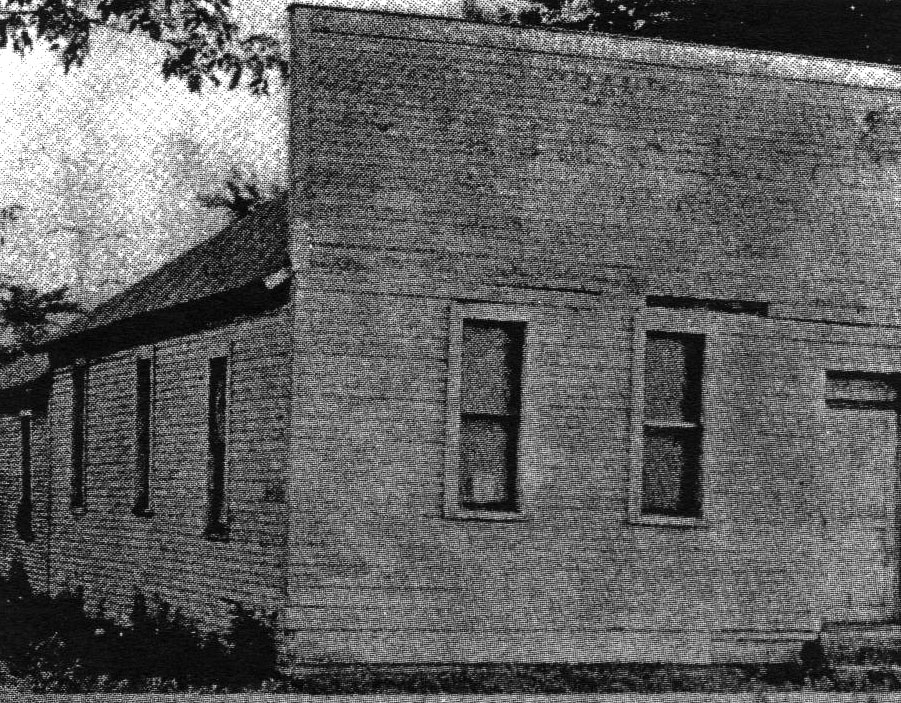
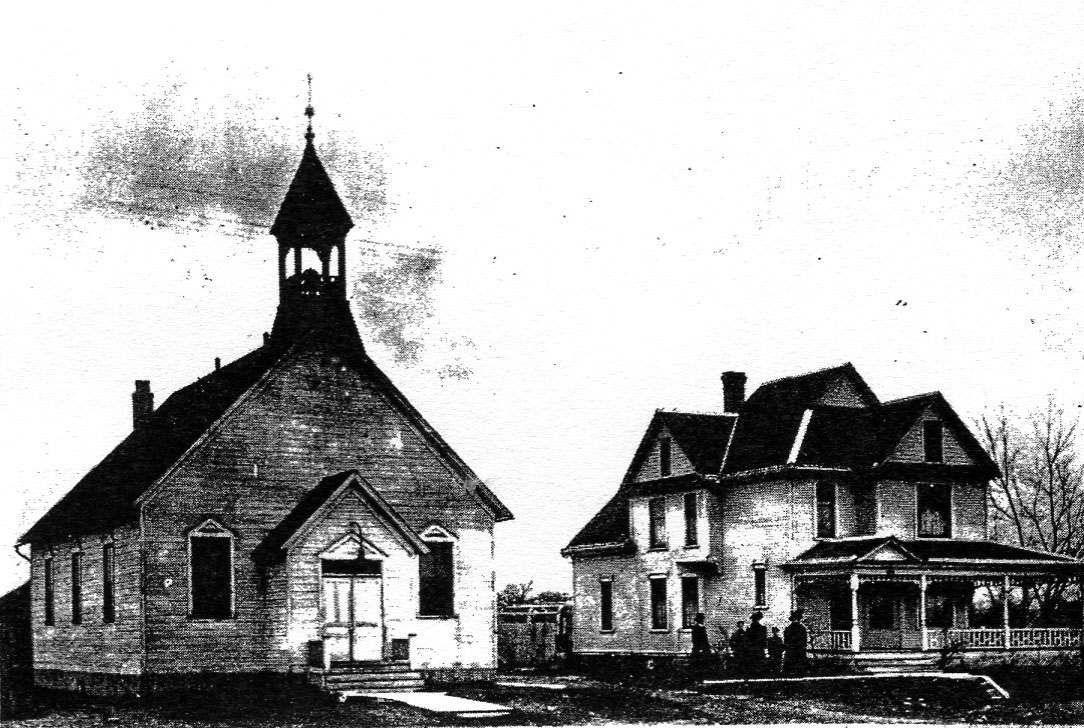


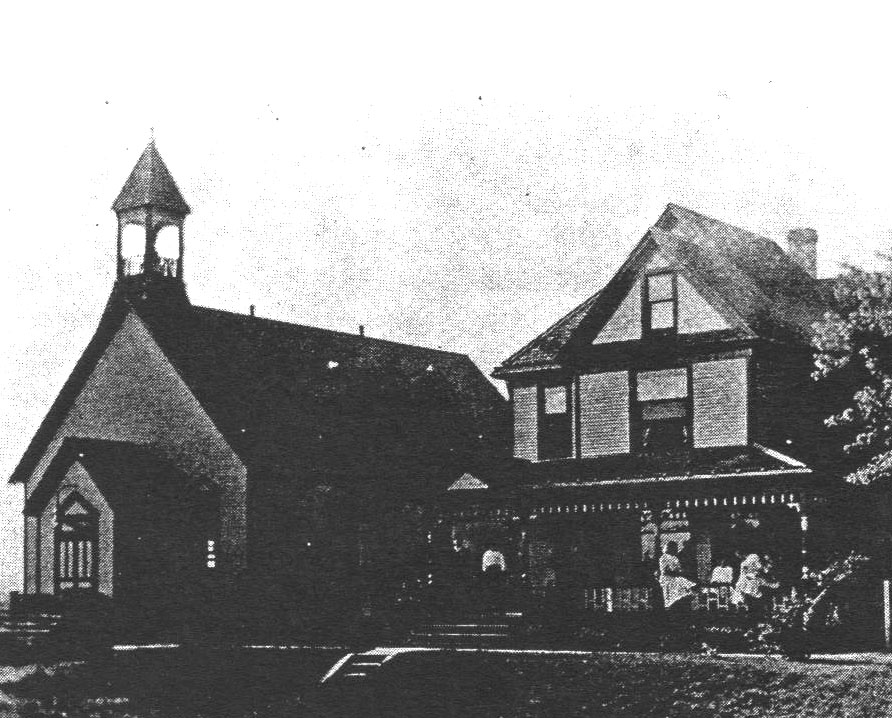
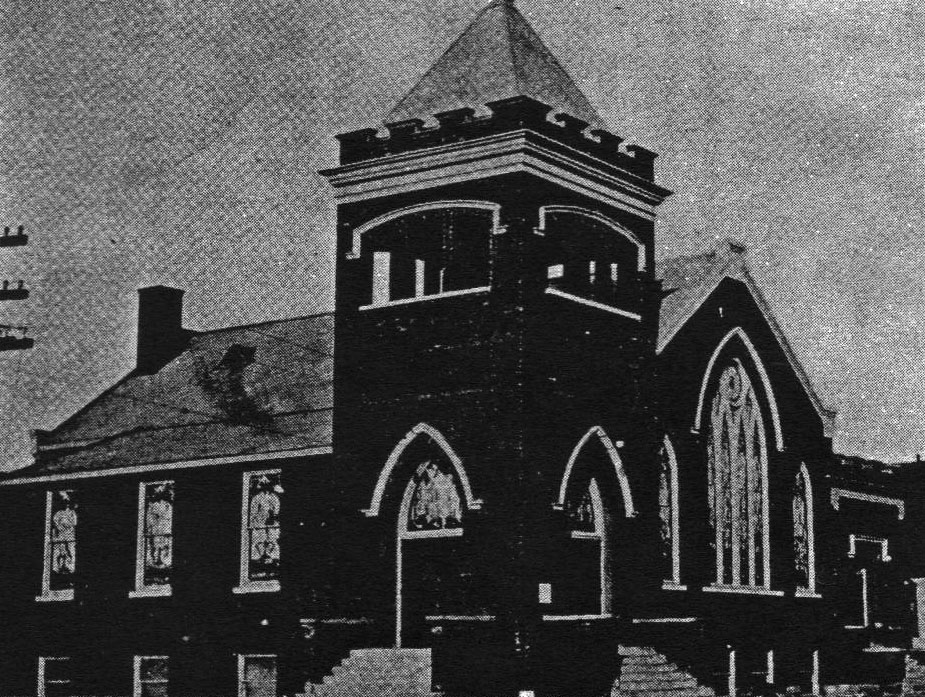
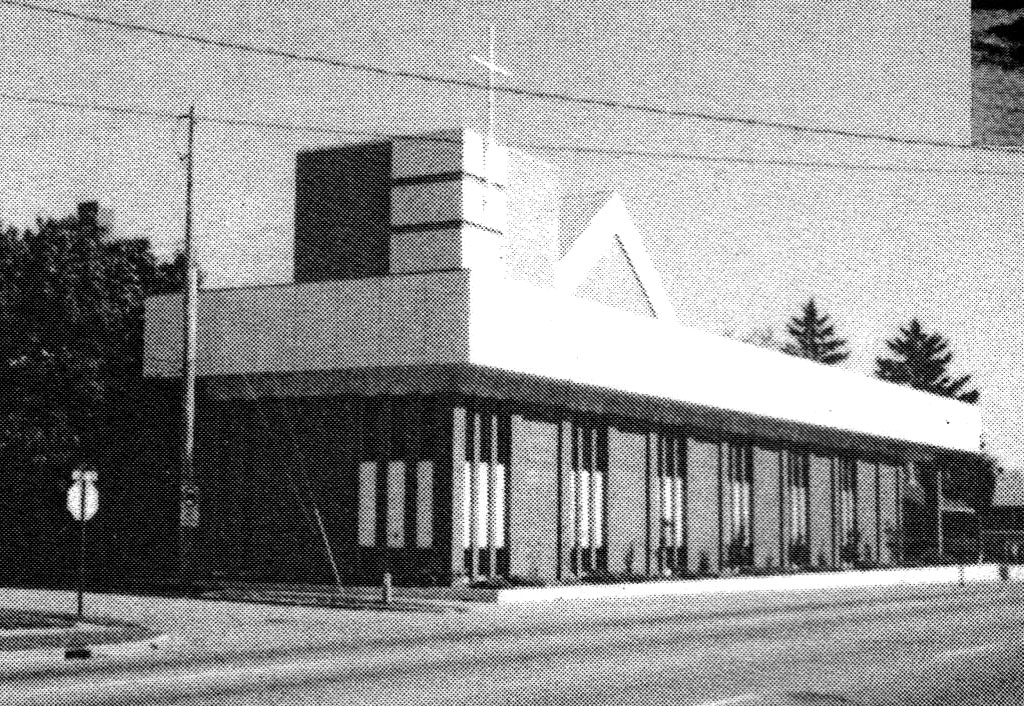
Pictures of the Eighth Reformed Churches and Parsonages
|
EIGHTH REFORMED CHURCH EARLY HISTORY 1891 - A Classis meeting at Second Reformed Church decided that a mission station should be opened in south Grand Rapids. In October a group of twenty communicant and nineteen baptized members of the Reformed Church were represented before the Classis by two of their number, Mr. William Timmerman and Mr. D. Klomparends, asking permission to organize a church. A committee was appointed to undertake the matter of organization. The following were charter members of eighth Reformed Church: Mr. and Mrs. Gerrit Bannink |
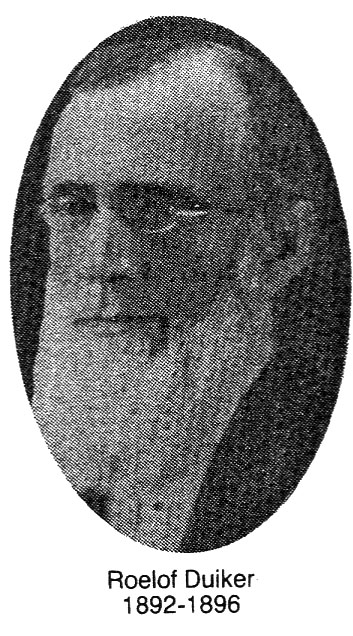
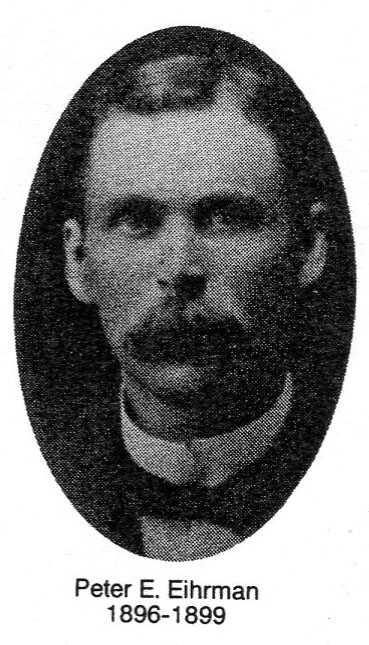
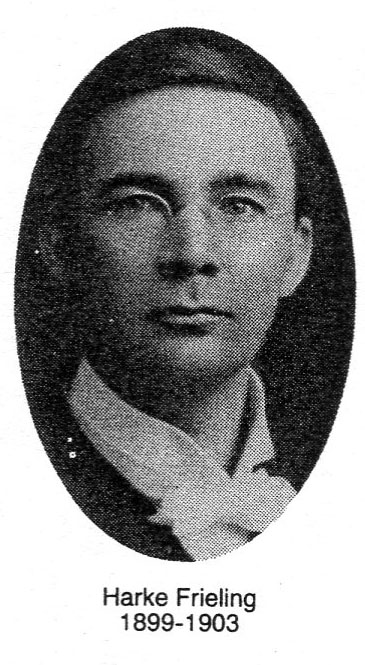
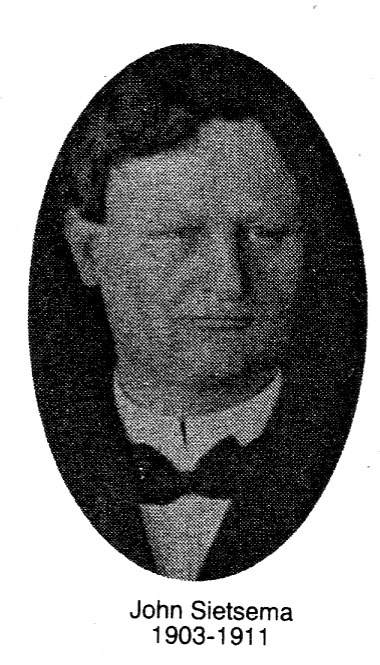
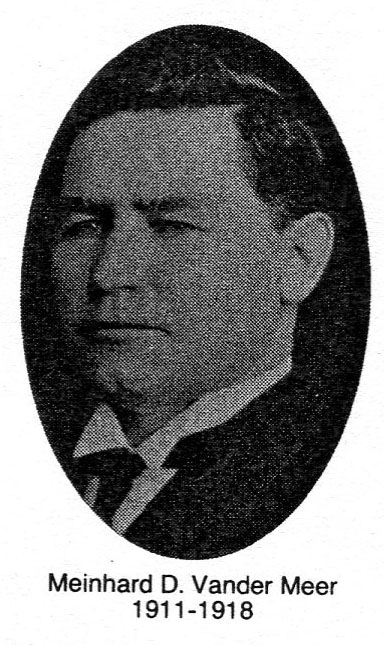
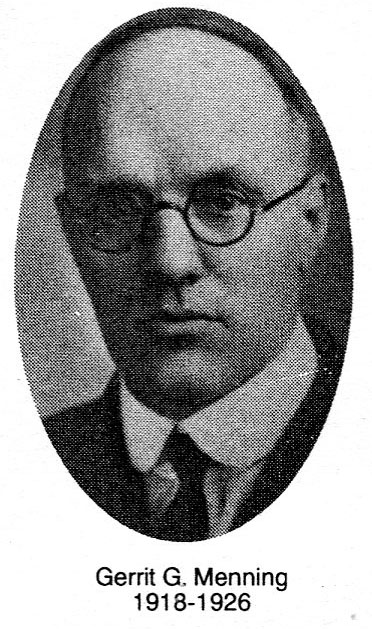
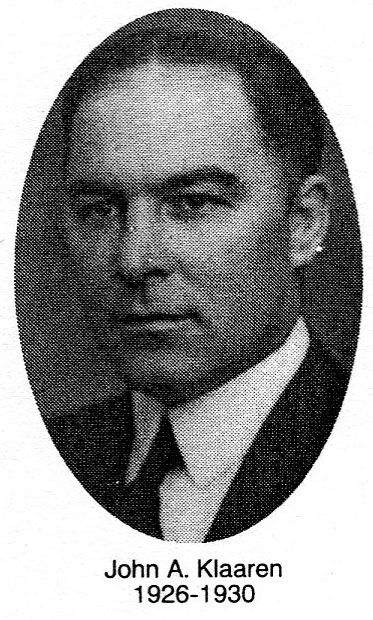
Early Pastors of Eighth Reformed Church
|
1892 - The newly organized church sent its first official delegate to the Classis meeting. Peter Zwemer, seminary student, was appointed by the Classis to serve the young church for the summer months. A Sunday School was organized. In November the church called its first minister, Rev. R. Duiker, from the Third Reformed Church in Kalamazoo. The call was accepted and Rev. Duiker was installed in December. A Ladies' Missionary Society (later called The Dorcas Society) was formed. 1893 - It was decided that a parsonage should be built; the cost, $1,200 would be met by donations from the congregation. Also, more land was purchased, and the church building was placed at a site near that of the present building. The small wooden structure was lighted with oil lams and heated by a stove at the rear of the building. A segregated seating pattern was followed - men at the sides and women in the center. 1896 - Rev. Duiker's retirement request, brought about by his old age (72) and ill health, was granted by the congregation. Rev. P. Eihrman was installed as the new minister. 1897 - Sixteen new members were added to the church. 1899 - In September Rev. H. Frieling arrived to take up the work as the third pastor of the church. 1903 - Rev. J. Sietsema was installed as the new minister. 1906 - The church building was enlarged and remodeled. Each family was asked to contribute $2.00 toward this project. Each family also was asked to contribute another $1.00 to pay for new benches for the church. A janitor was hired for $72 per year. The minister's salary was raised to $850 yearly. 1907 - A special offering was taken for famine relief in Chinga. 1908 - Four collection "bakjes" were a gift from the John Widdicomb Company. 1909 - Annual Consistorial Report: 1910 - The first of many discussion concerning Dutch and/or English services was held. It was decided that for the young people the Sunday evening service should be in English. A p0rayer meeting was held on Wednesday nights. 1911 - Rev. M. VanderMeer became the new minister. An organ was purchased for $350 from the Third Reformed Church. 1912 - The membership had outgrown the small church building. A committee was appointed to study the building of a new church. 1913 - Plans for a new brick veneer church was presented at a special congregational meeting. Costs of the new building were estimated at $12,000. The members had pledged $5,400, and a loan of $5,000 was received from the Board of Domestic Missions of the Reformed Church. More land was acquired by purchase and by a donation of a lot from the Alabastine Company. The cornerstone was laid in April and a dedication was held in December. 1914 - The budget envelope system of giving was initiated. This move met with much discussion and opposition and led to a further study of the matter two years later. 1917 - A number of young men of the church entered the military service. Electric lights were installed in the parsonage. A vote, by ballot, concerning the budge system came out 38 in favor, 30 opposed. 1918 - Rev. G. Menning was called to be the new pastor. Bibles were purchased for servicemen. 1919 - A special congregational meeting in August voted to continue the afternoon services. In December by another vote of 51 to 11 it was decided that afternoon services would be discontinued as of January, 1920. The Men's Bible Class was organized by Rev. Menning. 1920 - The Helping Hand Society was organized with thirty-five members. 1922 - A new brick parsonage was erected at an estimated cost of seven to eight thousand dollars, and the old one was sold. Other new buildings included a brick garage, a shed for two horses, and men's and women's toilets. 1923 - It was decided by the congregation to hold English services in the morning on the first and third Sundays of each month with Dutch services in the afternoon. On the second and fourth Sundays, Dutch services would be held in the morning and not services would be held in the afternoon. 1925 - The English-Dutch controversy was discussed at great length all during the year. In December a decision was arrived at, by a vote of 44 to 29, to have English services every Sunday morning. The church took on the responsibility of paying the salary of Miss Agnes Buikema, a missionary to China and daughter of the church. 1926 - A call was extended to Rev. J. Klaaren to become the church's minister. 1929 - Additional lots were purchased and lavatories were installed in the church. 1930 - The women of the church were given the right to vote on church matters. The church continued its growth. |
Transcriber: ES
Created: 8 May 2012